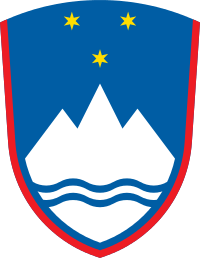Slovene literature
| Part of a series on the |
| Culture of Slovenia |
|---|
 |
| History |
| People |
| Languages |
|
Mythology and folklore |
| Cuisine |
| Religion |
|
|
Music and performing arts |
| Sport |
|
Monuments |
|
Slovene literature is the literature written in the Slovene language. It spans across all literary genres with historically the Slovene historical fiction as the most widespread Slovene fiction genre. The Romantic 19th century epic poetry written by the leading name of the Slovene literary canon, France Prešeren, inspired virtually all subsequent Slovene literature.
First written texts in Slovene language



First written text
The earliest documents written in a Slovene dialect are the Freising manuscripts (Brižinski spomeniki), dated between 972 and 1022, found in 1803 in Freising, Germany.
First books
The first books in Slovene were Catechismus and Abecedarium, written by the Protestant reformer Primož Trubar in 1550 and printed in Schwäbisch Hall.[3] Based on the work by Trubar, who from 1555 until 1577 translated into Slovene and published the entire New Testament, Jurij Dalmatin translated the entire Bible into Slovene from c. 1569 until 1578 and published it in 1583. In the second half of the 16th century Slovene became known to other European languages with the multilingual dictionary, compiled by Hieronymus Megiser. Since then each new generation of Slovene writers has contributed to the growing corpus in the Slovene.
Historical periods
Middle Ages
Folk poetry
Protestant reformation
Counter-reformation
Baroque
Age of Enlightenment
1830–1849
1849–1899
Fin-de-siecle
This period encompasses 1899–1918.
Late realism
1918–1941
1918–1926
1918–1930
1930–1941
1941–1945
1945–1990
Neo-realism
Intimism
Intimism (Slovene: intimizem) was a poetic movement, the main themes of which were love, disappointment and suffering and the projection of poet's inner feelings onto nature.[4] Its beginner is Ivan Minatti, who was followed by Lojze Krakar. The climax of Intimism was achieved in 1953 with a collection of poetry titled Poems of the Four (Pesmi štirih), written by Janez Menart, Ciril Zlobec, Kajetan Kovič and Tone Pavček.[5] An often neglected female counterpart to the four was Ada Škerl, whose subjective and pessimistic poetic sentiment was contrary to the post-war revolutionary demands in the People's Republic of Slovenia.[6]
Modernism
Postmodernism
Post 1990
References
| Wikimedia Commons has media related to Slovene literature. |
- ↑ Smrekar, Andrej. "Slovenska moderna" [Slovene Early Modernism] (in Slovenian). National Gallery of Slovenia.
- ↑ Naglič, Miha (6 June 2008). "Je človek še Sejalec" [Is a Man Still a Sower]. Gorenjski glas (in Slovenian).
- ↑ Ahačič, Kozma (2013). "Nova odkritja o slovenski protestantiki" [New Discoveries About the Slovene Protestant Literature] (PDF). Slavistična revija (in Slovenian and English). 61 (4): 543–555.
- ↑ Pavlič, Darja (May 2008). "Contextualizing contemporary Slovenian lyric poetry within literary history" (DOC). Retrieved 7 February 2011.
- ↑ (Slovene) http://gradivo.e-univerza.net/slo/Obdobja/sodobna_slovenska.htm
- ↑ "Umrla Ada Škerl" [Ada Škerl Deceased]. Delo.si (in Slovenian). 1 June 2009. Retrieved 7 February 2011.
